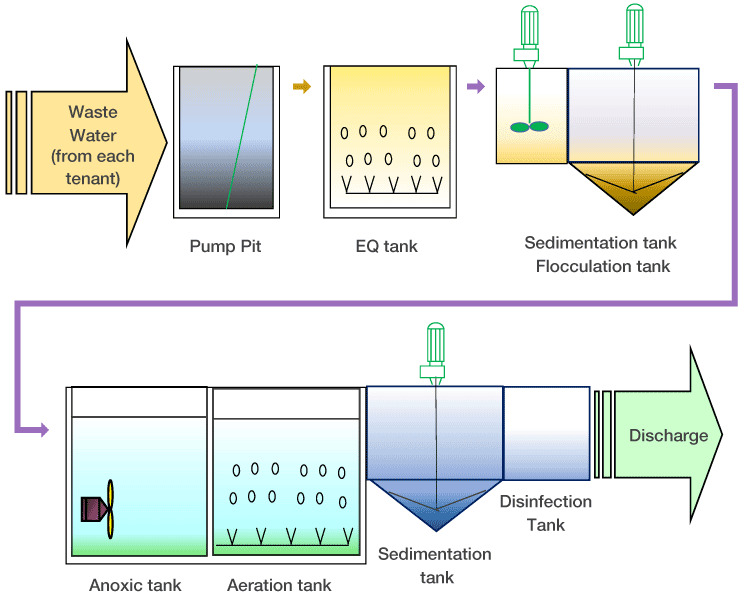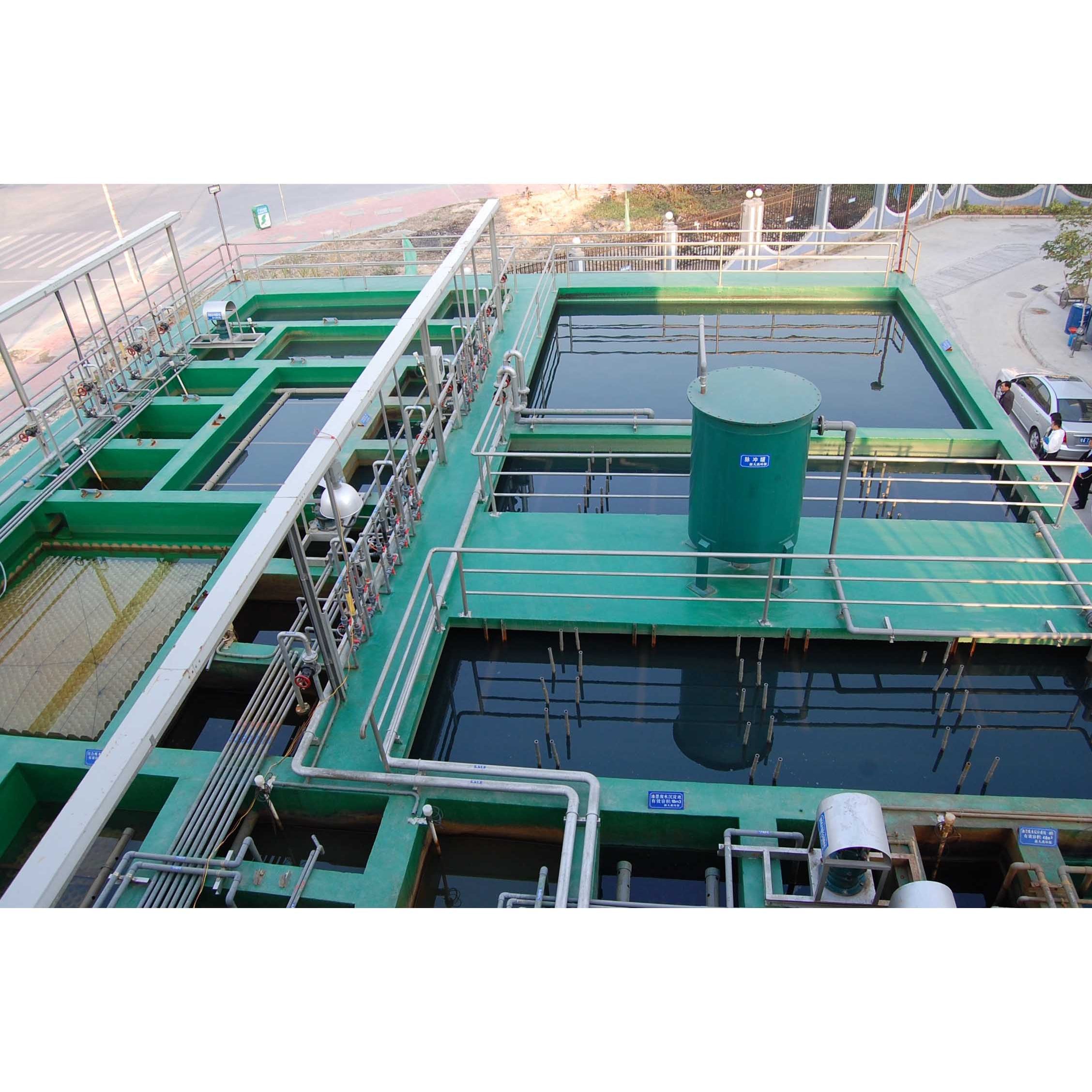Industrial Waste Water Treatment-- Cutting-Edge Technologies for Water Filtration
Industrial Waste Water Treatment-- Cutting-Edge Technologies for Water Filtration
Blog Article
Secret Techniques in Industrial Waste Water Therapy Procedures
The therapy of commercial wastewater is a critical aspect of environmental administration, including an array of strategies designed to mitigate the impact of impurities. Improvements in modern technologies such as membrane layer filtration and progressed oxidation processes provide ingenious options for improving therapy effectiveness.
Physical Therapy Techniques
Exactly how successfully can physical therapy techniques attend to the intricacies of commercial wastewater? Physical treatment techniques play a critical role in the preliminary stages of wastewater management, focusing mostly on the removal of solids and huge particulates. Techniques such as sedimentation, flotation, and purification are necessary for lowering the focus of suspended solids, thus enhancing the performance of succeeding treatment procedures.
Sedimentation entails the gravitational settling of solids, enabling for the separation of much heavier materials from the wastewater. This technique is particularly reliable in clarifying water prior to chemical or biological therapies.
Additionally, flotation protection methods, which use air bubbles to raise suspended solids to the surface area for removal, are efficient in treating wastewater with high concentrations of fats, oils, and oils. In general, physical treatment methods act as a vital primary step in the comprehensive monitoring of industrial wastewater, ensuring that the tons on succeeding treatment stages is decreased and enhancing general therapy efficacy.
Chemical Treatment Methods
While physical therapy methods lay the foundation for efficient wastewater monitoring, chemical treatment strategies are necessary for dealing with the more complicated contaminants usually discovered in commercial effluents. These techniques make use of different chemical representatives to precipitate, reduce the effects of, or oxidize hazardous materials, ensuring a much more comprehensive elimination of pollutants.
One typical strategy is coagulation and flocculation, where chemical coagulants such as aluminum sulfate or ferric chloride are contributed to advertise the aggregation of put on hold fragments. This process boosts solid-liquid splitting up, minimizing turbidity and boosting water top quality. In addition, neutralization processes are utilized to readjust the pH of wastewater, using acids or bases to counteract acidic or alkaline streams, respectively.
Oxidation-reduction reactions play a vital role in degrading organic impurities and virus. Chemical oxidants like chlorine, hydrogen, or ozone peroxide are used to damage down intricate organic compounds, making them less damaging or extra biodegradable. Advanced oxidation processes (AOPs) combine multiple oxidation techniques to improve contaminant removal effectiveness.
Biological Treatment Processes
The effectiveness of wastewater treatment is considerably improved by biological treatment processes, which harness the natural metabolic tasks of bacteria to decay raw material and eliminate contaminants. Industrial Waste Water Treatment. These processes mainly involve aerobic and anaerobic food digestion, each customized for certain kinds of wastewater
Cardiovascular treatment procedures make use of oxygen to sustain microbial growth, promoting the breakdown of natural contaminants into carbon dioxide and water. Usual techniques include activated sludge systems, where oygenation containers assist in the mixing of wastewater with microorganisms, and dripping filters, which encourage over here biofilm growth on media surface areas.
On the other hand, anaerobic treatment procedures happen in the absence of oxygen, making use of anaerobic germs to decompose raw material, resulting in biogas manufacturing, a sustainable power source. Anaerobic digesters are frequently used in industrial setups for this function, efficiently lowering the volume of sludge while generating valuable biogas.
The selection of an organic treatment approach relies on wastewater qualities, therapy objectives, and regulative criteria. The combination of organic processes in wastewater therapy not only improves pollutant removal performance however additionally promotes sustainability by decreasing chemical usage and sustaining source recovery.
Advanced Oxidation Processes

Common AOP methods include Fenton's ozonation, photocatalysis, and reagent. Fenton's reagent, a mix of hydrogen peroxide and ferrous iron, militarizes the formation of hydroxyl radicals, making it reliable for dealing with wastewater having phenolic compounds and other recalcitrant materials.
AOPs provide numerous advantages, including minimized sludge manufacturing and the capacity to treat wastewater with high concentrations of organic contaminants. The application of AOPs needs cautious consideration of operational specifications and cost-effectiveness, making sure that these sophisticated methods are properly incorporated into existing wastewater treatment systems.
Membrane Filtration Technologies

Microfiltration works for getting rid of put on hold solids and bacteria, while ultrafiltration targets smaller sized organic particles and infections. Nanofiltration bridges the void between ultrafiltration and turn around osmosis, efficiently getting rid of divalent ions and organic compounds. Reverse osmosis offers the greatest degree of filtration, made use of largely for desalination and removing mono-valent ions.
Membrane technologies provide various advantages, including low energy consumption compared to conventional treatment methods, modular design for scalability, and the potential for water recovery and reuse. However, challenges such as membrane fouling and the demand for normal upkeep need to be dealt with to make sure system effectiveness. On the whole, membrane layer filtering innovations represent a vital part of modern industrial wastewater treatment approaches, advertising sustainability and resource preservation in water monitoring.
Final Thought
In final thought, industrial wastewater therapy uses a find here diverse variety of methods, consisting of physical, chemical, biological, and advanced techniques. Continued improvements in these techniques will certainly further improve the effectiveness and efficiency of wastewater therapy processes in industrial setups.
The therapy of industrial wastewater is an essential aspect of environmental monitoring, involving a variety of methods made to reduce the effect of impurities.Just how effectively can physical treatment techniques resolve the complexities of industrial wastewater?Advanced oxidation processes (AOPs) represent an innovative method in industrial wastewater treatment, developed to successfully break down natural toxins that are frequently resistant to traditional treatment techniques (Industrial Waste Water Treatment).In final thought, commercial wastewater therapy utilizes a varied variety of methods, consisting of physical, chemical, biological, and advanced techniques. Continued developments in these approaches will even more enhance the efficiency and effectiveness of wastewater therapy procedures in industrial settings
Report this page